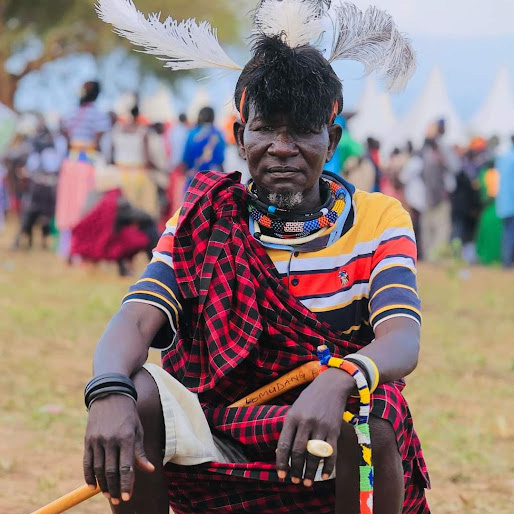Imagine waking before dawn to watch a neutral sunrise spill across endless grasslands, the distant rumble of thousands of hooves rising on the horizon. The Serengeti pulses with life year-round, but each season brings its own magic.
Whether you crave dramatic river crossings, newborn calves tottering on wobbly legs, or lush birding in emerald foliage, choosing the right month can make all the difference.
Beyond wildlife drama, the Serengeti offers a chance to step out of time. You’ll trade city buzz for birdcalls at dawn, swap traffic jams for dusty tracks beneath acacia trees, and swap crowded viewing platforms for silent moments in the bush. Planning when to go helps you match your own pace—whether you seek solitude in the rains or high-energy crossings in the dry.
The Serengeti isn’t just a park—it’s a living stage for nature’s greatest dramas and impressive sightseeing you cannot get elsewhere. Here you’ll witness the ancient rhythm of migration, where over a million wildebeest and zebra march in search of fresh grazing.
Predators follow in their wake, offering rare glimpses of lion, leopard and cheetah in action. Beyond the Big Five, the park’s bird list tops 500 species, from elegant kori bustards to vibrant lilac-breasted rollers. And it’s not only wildlife: endless horizons, ancient fossil beds at Olduvai Gorge and the warmth of Maasai hospitality make every day an adventure.
Visiting the Serengeti also connects you to conservation stories still unfolding. Local guides share first-hand insights on habitat protection, community-run lodges reinvest in education, and research camps track endangered species.
You then realize later that your visit becomes more than a safari—it supports grass-roots efforts to keep this ecosystem wild for generations to come.
If you’ve dreamed of camera-worthy moments, plan for July through September. This is peak migration season, when vast herds funnel toward the Mara River. Early morning you’ll stake out riverbanks as hippos and crocodiles share the waters. By mid-day the tension builds: thousands line up, ready to dart across. This spectacle draws crowds—so book your camp or lodge well in advance to secure a front-row view.
Even within this peak window, movement shifts from east to west. Mid-July sees herds crunch through western grasslands, while August brings them to the river’s edge. Trained guides track GPS-tagged groups daily, adjusting routes so you arrive where action is unfolding—whether it’s a dramatic crossing or a chance to see a stalk in the tall grass.
January and February usher in calving season on the southern plains. Over a million wildebeest give birth in a frenzy of life. You’ll witness vulnerable newborns take their first wobbly steps while hungry predators shadow the herds. Game-drive trails feel quieter here—fewer tents, more keepsakes of intimate wildlife encounters. Pack binoculars and keep your camera hand-steady as you watch nature’s drama unfold.
The vulnerability of calves also brings intense predator-prey dynamics. Lionesses circle hiding spots, hyenas lie in wait, and jackals dart through the grass. Guides will teach you to read subtle signs—shifts in herd behavior, distant roars—that hint at action just beyond sight. This season offers unforgettable lessons in survival and the raw pulse of the savanna.
From June to October the plains dry out, and wildlife congregates around dwindling water sources. Big cats stake out watering holes, elephants dig dusty wallows, and herds cluster on green patches along riverbanks.
The skies clear and nights are cool—ideal for early-morning drives. Wildlife viewing stays exceptional even outside migration peaks, and your chance of spotting the Big Five remains high.
With vegetation low, visibility improves across grasslands and woodlands alike. You’ll spot lone rhinos silhouetted against the horizon, walk alongside termite mounds that stand like watchtowers, and watch flocks of turkey vultures circle overhead. Photographers prize this clarity—each still waterhole and each animal silhouette stands out in sharp relief against the dry backdrop.
If vibrant color and birdlife interest you, visit during the short rains (November) or long rains (April–May). The grass turns emerald, wildflowers carpet the plains, and migratory birds flood back in technicolor flocks.
Drives can be slower—muddy tracks and afternoon showers mean fewer jeeps on the road. You’ll find solitude and dazzling photography opportunities as storks, cranes and bee-eaters fill the skies.
Rainy months also bring newborn plains game—zebra foals and impala lambs—and breeding displays by birds of paradise. Camps lean on raised walkways and solid tents, so you stay dry even when the sky opens up. These seasons reward patience: a single rainstorm can set off a cascade of wildlife activity and transform the landscape overnight.
Beyond these basics, lean on local expertise. Guides pore over daily wildlife reports and use radio networks to share sightings across the park. Ask about wanderings, recent predator activity or hidden birding trails—they’ll point you to corners few visitors see. And always carry a refillable water bottle: even short drives under the African sun can leave you parched.
Every season in the Serengeti tells a different story. Will you time your visit for thundering river crossings, the drama of first steps, classic dry-season game viewing or a quiet, green escape? Wherever you go, the Serengeti will leave its mark—long after the dust settles.
Your choice of month shapes the wildlife cast, the landscape palette and the rhythm of your days. Pack according to the season, lean on your guide’s know-how, and prepare for moments that outlast any calendar date. The Serengeti beckons—answer its call on your own timeline.
Give Us a call or arrange a meeting with one of our Travel Consultants to discuss more your Tanzania Safari Adventure



Made in Arusha - Tanzania :)
Copyright © 2026 Serengeti Mara Experts LLC All Rights Reserved